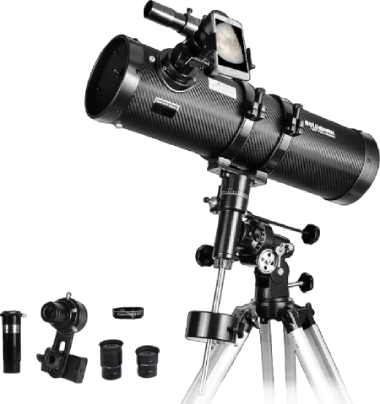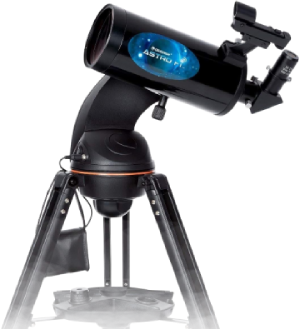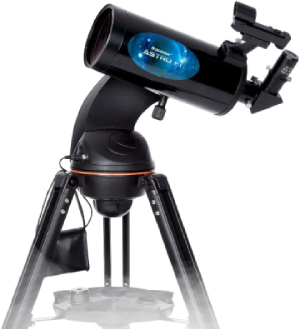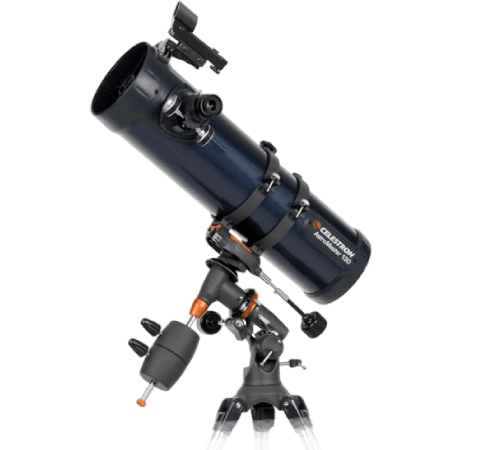The Celestron Astro Fi 102 is a beginner-friendly smart telescope that brings the universe closer with just a tap on your smartphone. Whether you're gazing at craters on the Moon, the rings of Saturn, or deep-sky objects like the Orion Nebula, this telescope is designed for those new to astronomy but hungry for celestial detail.
Explore the Stars with the Celestron Astro Fi 102
Objective Lens Diameter :
Power Source :
Optical Tube Length :
Control your telescope via integrated WiFi using the free Celestron Sky Portal app for iPhone, iPad, and Android devicesSee On Amazon

Ideal for curious minds, families, students, and amateur stargazers, the Astro Fi 102 offers a hands-on, tech-enabled stargazing experience. Its 102mm Maksutov-Cassegrain optics deliver sharp, contrast-rich views—perfect for observing the Moon, Jupiter’s bands, Saturn’s rings, and even some brighter galaxies and star clusters.
Product Features: Why Choose the Celestron Astro Fi 102?
Maksutov-Cassegrain Optics for Crisp Views
The telescope features a 102mm (4-inch) aperture with a long focal length, ideal for planetary and lunar observation. The optical design excels at reducing chromatic aberration, giving you crisp images even at higher magnifications.Wireless App Control (No Hand Controller Needed)
Say goodbye to complicated manual alignment. The Astro Fi 102 connects directly to your smartphone or tablet via WiFi, allowing you to control the telescope using the free Celestron SkyPortal App.Tap an object on your screen, and the telescope slews to it automatically!SkyAlign Technology for Easy Setup
With SkyAlign, all you need to do is point the scope at three bright objects in the sky. The system will triangulate your position and calibrate automatically, so you can start observing right away—even with little knowledge of the night sky.Portable & Lightweight
Weighing under 16 lbs, this telescope is perfect for travel or backyard stargazing. It’s compact enough to fit in a car trunk and sturdy enough for reliable performance.Great Value for the Features
While not the cheapest telescope on the market, the Astro Fi 102 offers exceptional value by combining high-quality optics with smart control features. It strikes the perfect balance between affordability and functionality for new astronomers.How to Choose a Telescope Like the Astro Fi 102
When selecting a beginner telescope, consider the following:
- Optical Design: Maksutov-Cassegrain is ideal for planetary viewing due to its long focal length and compact build.
- Aperture Size: A 102mm aperture gathers ample light to see most solar system targets and many brighter deep-sky objects.
- Mount Type: A motorized Alt-Azimuth mount with GoTo functionality makes target finding a breeze.
- Tech Features: WiFi connectivity and app control enhance usability, especially for digital natives.
- Budget: Expect to invest around $400–$500 USD for a telescope in this class with reliable performance and longevity.
Related Read
What Can You See with a 70mm, 90mm, or 130mm Telescope? A Beginner's Visual Guide to Night Sky Wonders
Ready to Explore the Universe?
If you're looking for a reliable, user-friendly, and smart telescope for beginners , the Celestron Astro Fi 102 is an excellent choice. With its powerful optics and app-controlled mount, it’s like having a guided tour of the cosmos in your backyard.
👉 Click here to view our recommended Celestron Astro Fi 102 deal on Amazon.Start your journey into astronomy today!


